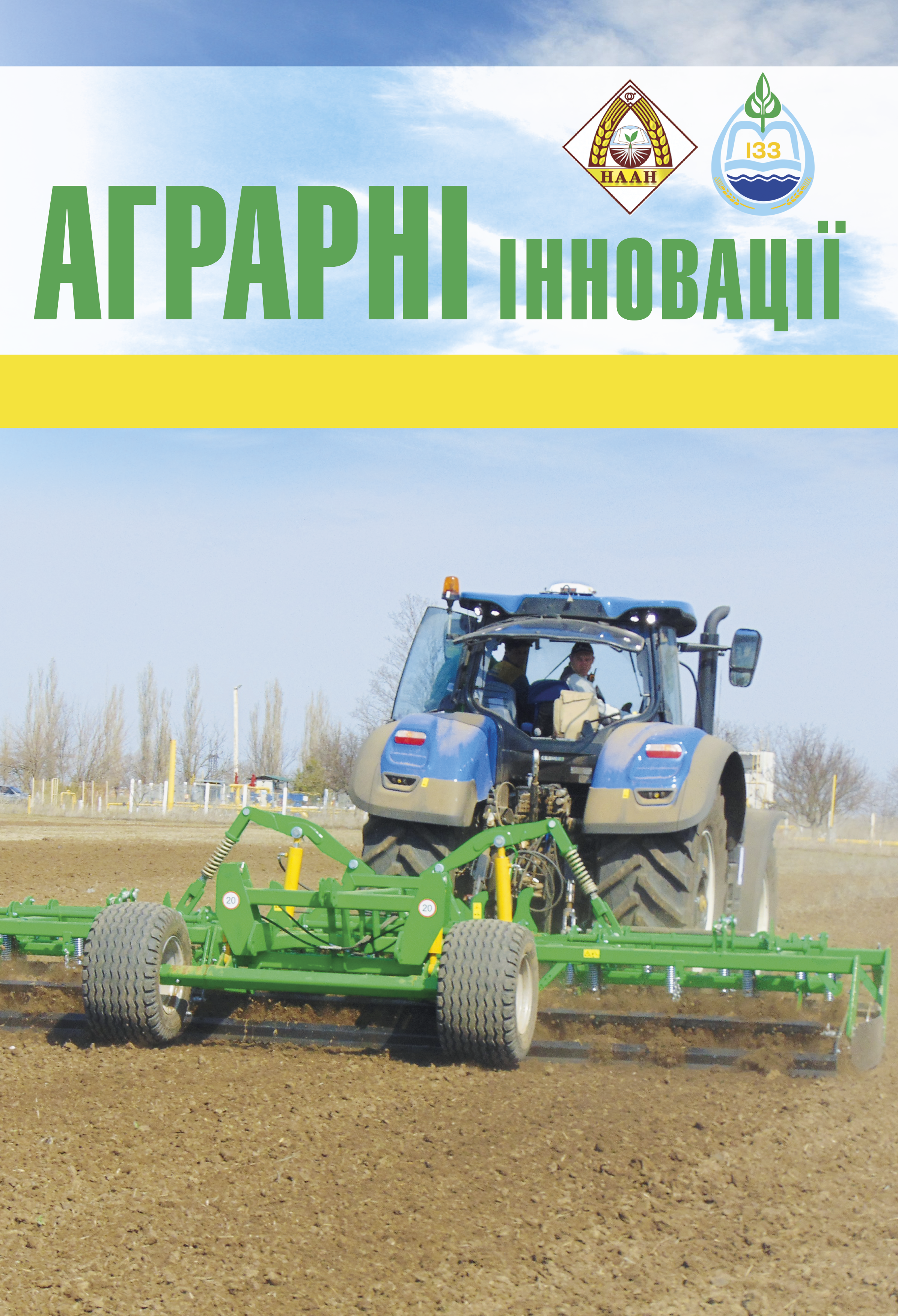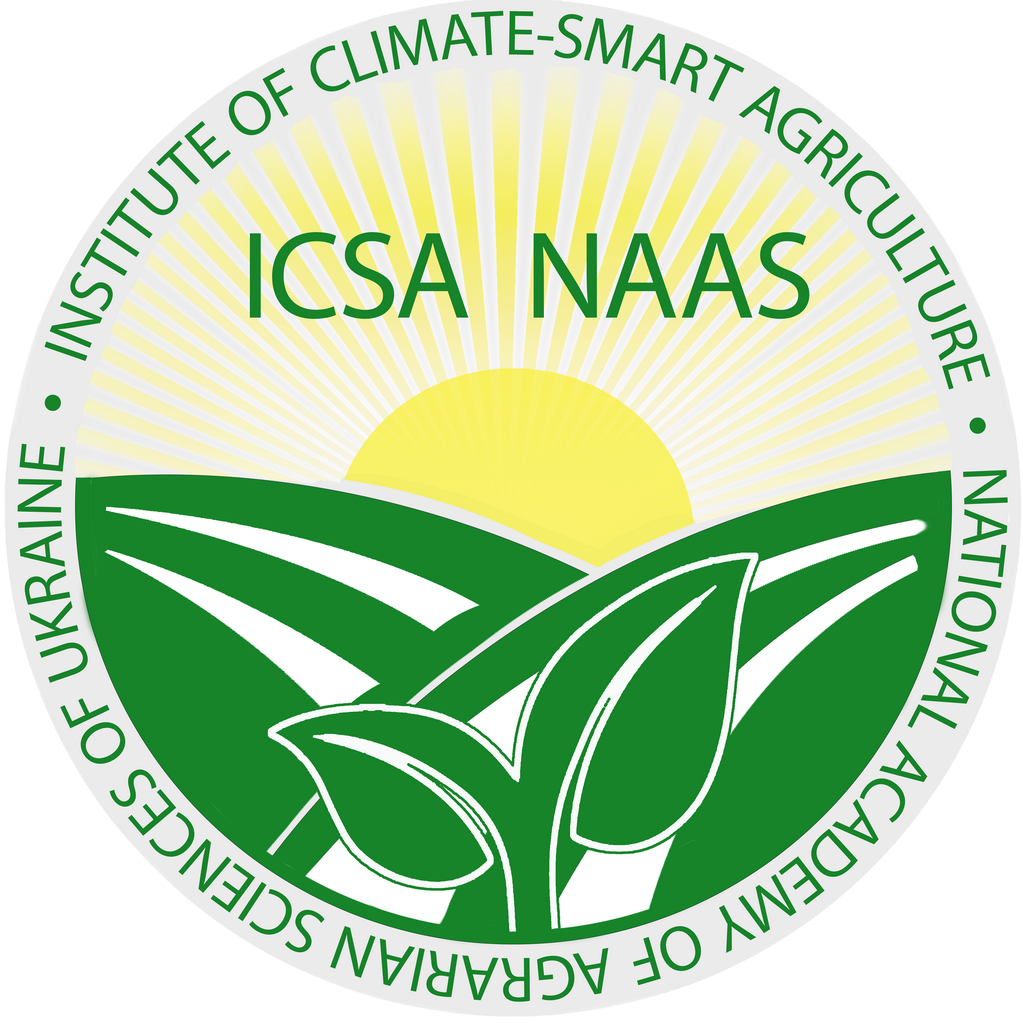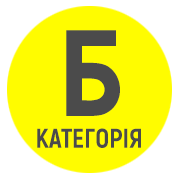Soil entomofauna of the agrobiocenosis of a wheat field in the Central Forest-Steppe zone of Ukraine
Abstract
The purpose of the article is to clarify the species compositionof soil insects in the winter wheat agrocenosis ofthe Forest-Steppe of Ukraine. Identification of dominantspecies, their food specialization. Analysis of the state of populations and obtaining information about their numbersto make a forecast regarding the need for chemicalprotective measures. Research methods and materials.The research was conducted during 2019-2024 on winterwheat crops located in the Obukhiv (2023-2024) and BilaTserkva districts of the Kyiv region. The research was conductedusing generally accepted entomological methods:soil excavation, survey of registration sites, mowing withan entomological net, theoretical (proposing a hypothesisand forming conclusions based on research results;statistical; mathematical). Results. During the study ofthe entomocomplex of the surface layer of the soil of thewheat field, a small number of beetles from the families:black beetles (Tenebrionidae), weevils (Curculionidae),the number of which was insignificant. Among theLepidoptera, the winter moth (Agrotis segetum Schiff.(family Noctuidae) was dominated, as well as caterpillarsand other gnawing beetles, were found in the collections.They caused minor damage to young plants. Their densitywas 1,3 individuals/m2. Puparia and larvae of the wheatfly (Phorbia secures Tiensum.), the sprout fly (Delia platura(Migen.), and the winter fly Leptochylemyia coarctataF. (order Diptera, family Anthomyidae) were found inwinter wheat fields. The proportion of representatives ofall other insect orders was much smaller and amountedto 2% in total. Conclusions. The soil entomofauna ofthe winter wheat agrocenosis consisted of polyphagousinsects. Mostly representatives of the order Coleoptera,Lepidoptera, and Diptera. Among the coleopteran pests,small grain beetle larvae (Zabrus tenebriodes Goeze.),wireworm larvae (Elateridae) and scarab beetle larvae(Scarabaeidae) were found in small numbers, the densityof which was 2,6 individuals per m2 and 0,76 individualsper m2, respectively, which does not exceed the threshold.Among the Lepidoptera, the winter moth (Agrotis segetumSchiff. (family Noctuidae) dominated, its larvae and othergnawing moths caused minor damage to young plants.Their density was 1,3 individuals/m2. In isolated samples,pupae and larvae of the wheat fly (Phorbia securesTiensum.), the sprout fly (Delia platura (Migen.), and thewinter fly (Leptochylemyia coarctata F. (order Diptera,family Anthomyidae) were detected. Among the beneficialinsects, the most numerous was the hairy ground beetle(Harpalus rufipes Deg). Although it feeds on mixed food,but no damage to wheat plants was noted. Staphylinidaewere also found in small numbers. The adults and larvaeare saprophytes, and some species are active entomophagous.According to research results, outbreaks ofharmful soil entomofauna species in the Forest-Steppe ofUkraine on winter wheat are not expected. Therefore, inthe near future, it is not advisable to use chemical measuresto protect winter wheat crops aimed at soil pests.
References
2. Лісовий М.М., Овчинка В.В., Чайка В.С. Оцінка стану та екологічний аналіз біорізноманіття комах життєвої форми геобіонти в агроландшафтах Лісостепу України. Передгірне та гірське землеробство і тваринництво. 2009. Вип. 51(3). С. 61–75.
3. Федоренко В.П., Покозій Й.Т., Круть М.В. Ентомологія. Київ: Фенікс, 2013. 344 с.
4. Козак Г.П. Шкідливий ентомокомплекс озимої пшениці в Лісостепу України в умовах змін клімату. Землеробство. Київ, 2005. Вип. 77. С. 65–72.
5. Мельничук М.Д., Григорюк І.П., Чайка В.М. Глобальні зміни клімату загроза біоресурсам України. Біоресурси планети: соціальні, біологічні, продовольчі та енергетичні проблеми. Київ, 2008. С. 42–57.
6. Сушко Д.Ю., Волошина Н.О. Вплив змін клімату на стан популяції та розвиток комах. «VinSmartEco»: Збірник матеріалів II міжнародної науково-практичної конференції, (м. Вінниця, 20-21 травня 2021). Вінниця: КЗВО «Вінницька академія безперервної освіти», 2021. С. 67–69.
7. Федоренко А.В. Домінантні шкідники зернових колосових культур з ряду твердокрилих та прогноз чисельності у 2024 р. Карантині захист рослин. 2024. № 1 (276). С. 23–27.
8. Федоренко В.П., Чайка В.М., Бакланова О.В. та ін. Потепління і фітосанітарний стан агроценозів України. Карантин і захист рослин. 2008. № 5. С. 2–5.
9. Борзих О.І., Чайка В.М., Федоренко А.В. та ін. Стан шкідливого ентомокомплексу в посівах пшениці озимої в України за умов зміни клімату. Карантин і захист рослин. 2022. № 4 (271). С. 10–14.
10. Жук О.І. Формування та продуктивність рослин пшениці озимої за несприятливих умов навколишнього середовища. Генетика і селекція в сучасному агрокомплексі: Матеріали Всеукраїнської науково-практ. конф. молодих вчених. Умань, 2021. С. 65–68.
11. Хаблак С. Програми інсектицидного захисту озимої пшениці від шкідників. Агроном. 2024. № 3. URL: https://www.agronom.com.ua/programyinsektytsydnogo-zahystu-ozymoyi-pshenytsi-vidshkidnykiv/
12. Жуков О.В., Пилипенко О.Ф., Кірієнко С.М. Основи ґрунтової зоології та біоіндикації. Дніпропетровськ ДНУ, 2002. URL: https://www.zoology.dp.ua/wp-content/downloads/zhukov/ZH_02_01.pdf
13. Ткачова С. Шкідники сходів озимих культур та захист від них. Пропозиція 2023. URL: https://propozitsiya.com/ua/shkidnyky-shodiv-ozymyh-kultur-ta-zahyst-vidnyh
14. Пучков А.В., Гаврилюк Н.М. Особливості формування карабідофауни (Carabidae) на перелогах та в агроценозі озимої пшениці Південного Лісостепу України. Захист і карантин рослин. 2011. 57. С. 170–179.
15. Бабич С.М. Хлібні туруни (Coleoptera, Carabidae) та захист озимих колосових на півдні України. Захист і карантин рослин. К., 2008. № 54. С 20.
16. Круть М. Як ефективно захисти посіви від дротяників і несправжніх дротяників. Пропозиція. 2008. URL: https://propozitsiya.com/ua/yak-efektivno-zahistiposivi-vid-drotyanikiv-i-nespravzhnih-drotyanikiv
17. Трибель С.О., Федоренко В.П., Лапа О.М. Совки. Найпоширеніші в Україні види. Київ, 2004. 72с.
18. Ниска І., Петренкова, В. Хлібні жуки – загроза врожаю зернових культур. Пропозиція. 2016. URL: https://propozitsiya.com/ua/hlibni-zhuky-zagrozavrozhayu-zernovyh-kultur
19. Катеринчук І. Хлібний жук-кузька. Пропозиція. № 6. 2020. https://propozitsiya.com/ua/hlibniy-zhuk-kuzka
20. Покозій Й.Т., Писаренко В.М., Довгань С.В. та ін. Моніторинг шкідників сільськогосподарських культур: підручник / за ред. Й.Т. Покозія. Київ: Аграрна освіта, 2010. 223 с.
21. Трибель С.О., Стригун О.О. Оцінювання фітосанітарного стану посівів. Агроном. 2011 № 3. С. 58–60.
22. Практикум із сільськогосподарської ентомології: навчальний посібник / Літвінов Б.М., Євтушенко М.Д., Байдик Г.В., Сіроус Я.Л. Київ, 2009. 300 с.






